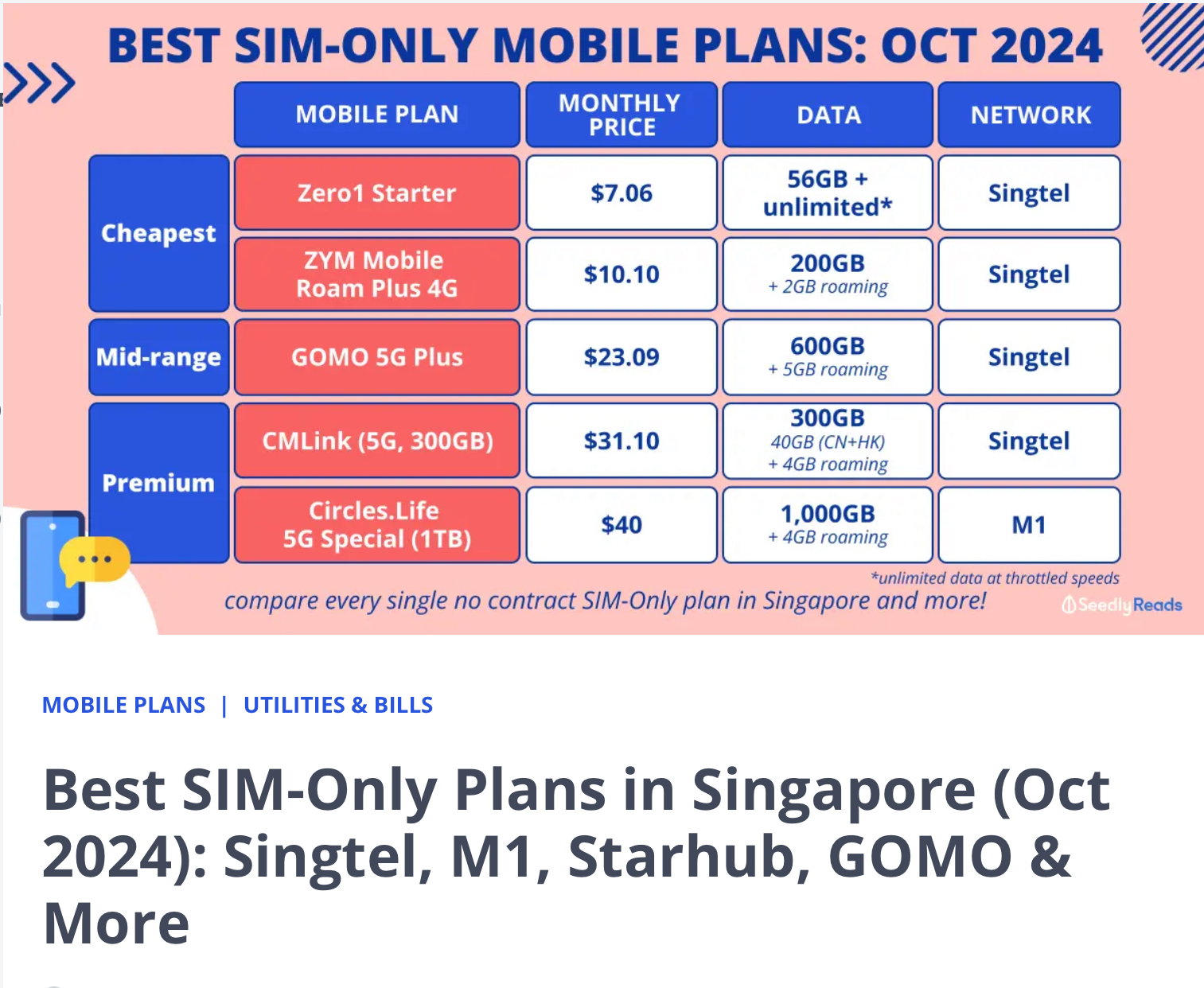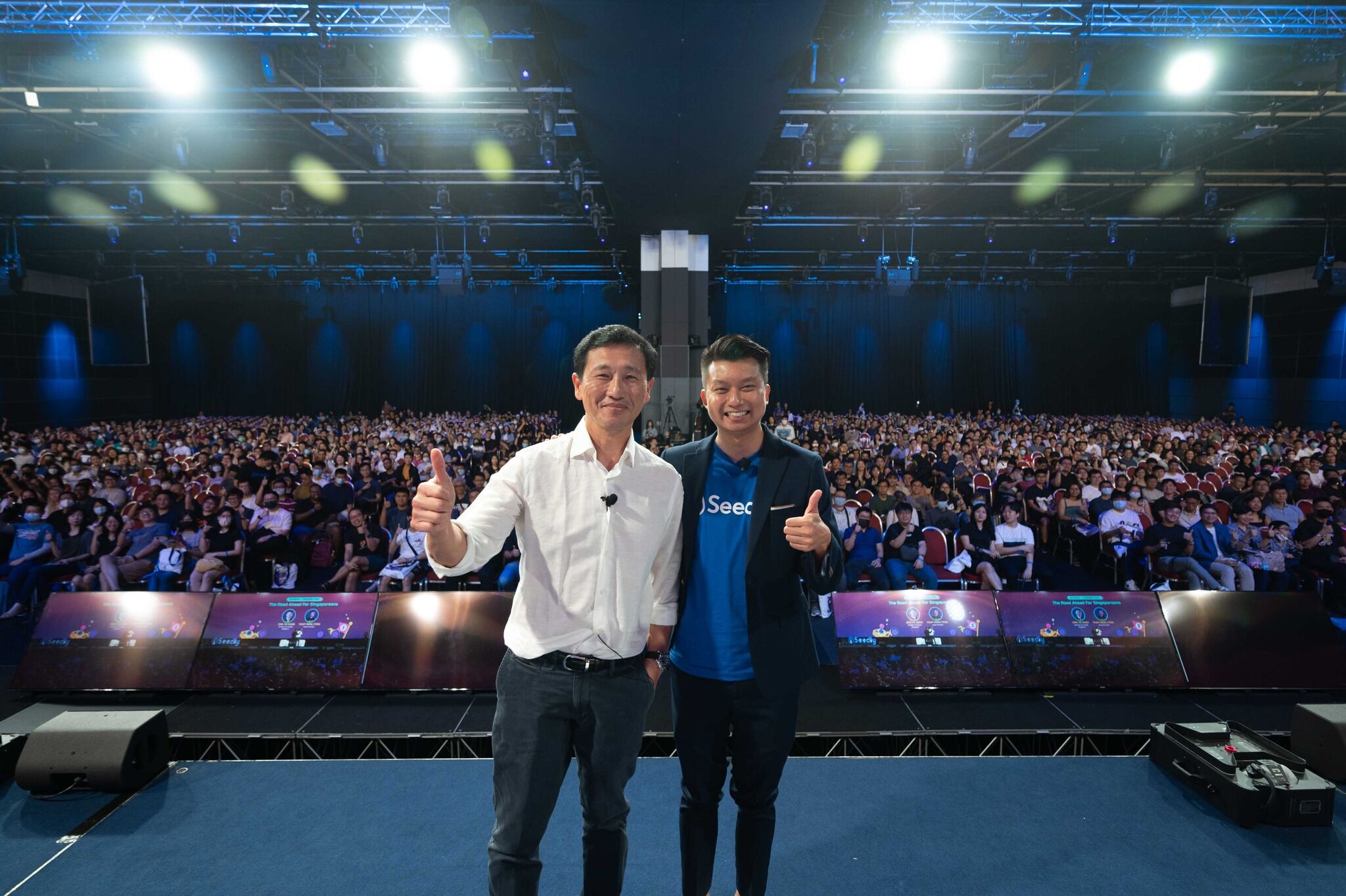
Content marketers are masters of contradiction.
You take everything you know about traditional marketing and throw it out the window. Were you taught to grab attention? Forget about that — content marketing is about joining customer conversations with tact and subtlety.
The contradictions don’t end there. A time might come in your life as a marketer when you need to kill your darlings. That means taking some ‘best practices’ you’ve learned about content marketing and throwing those out the window, too.
“Every company is going to have its own challenges. While my growth content marketing strategy worked for [my company], I will not look to adopt a blanket strategy across the companies I advise or work for,” says Ming Feng Yeap, former head of Seedly, a personal finance startup.
Despite these changes, the best content marketers hold tight to some fundamental principles that anchor their decisions.
This much was clear when With Content caught up with Ming Feng recently.
We first spoke to Ming Feng four years ago when he was Seedly’s Head of Content to find out how he got their finance blog from zero to 600,000 visits in just two years. Shortly after our interview, Ming Feng was promoted to Head of Marketing and, eventually, Head of Seedly. Who better to speak about the tensions, contradictions, and ultimately synergies between marketing and business growth?
Here’s what we learned.
Part of your success has nothing to do with content
While content marketers focus on the production and distribution processes of content, there’s another factor that makes or breaks a campaign. And it has nothing to do with writing.
“You would be surprised to know that a big part of a content marketer’s success can be pretty dependent on the organization structure and the mindset of the organization’s leadership,” Ming Feng explains.
Content marketing is a long game, after all — you slowly build a following through backlinking, SEO, and engagement strategies. It’s easy to feel anxious when your efforts aren’t yielding massive results within the first few months, but having such an expectation in the first place can hold you back from testing, learning, and eventually seeing the fruits of your labor.
“The balance between various business decisions and maturity of the content marketer is essential. It can also be something that will hold the content marketers back from being able to learn faster or achieve results to their fullest potential,” says Ming Feng.
Many marketers struggle with getting the leadership team to fully buy into the content marketing long game. As Ming Feng eventually fell into the position of Head of Seedly, he didn’t have this problem. But he does offer advice on how to speak decision-makers’ language.
“You need to be very clear on the metrics that are essential to your business instead of trying to focus on everything,” he says.
“We need to be the ones managing decision-makers by helping them visualize how certain initiatives can help them with their goals. More importantly, we need to be able to communicate our timeline and backup plan very clearly.”
He also suggests assigning meaningful business metrics to a combination of teams, instead of looking at one team to meet certain KPIs alone. He gave this example:
- Objective Key Results: Branded Search Volume
- Teams Involved: SEO, Content, Social Media
- Objective Key Results: Organic Search Volume
- Teams Involved: SEO, Content
That way, not all your eggs are incubating in one basket; the risk of failure is mitigated by other campaigns’ success.
Limitations can lead to some of your best decisions
Content marketers are all too familiar with limitations, whether in the form of time constraints or staff shortages.
Those limitations can unlock your creativity and lead you to strategic decisions.
In the early days of Seedly, Ming Feng cut the company’s marketing budget to zero dollars and focused solely on writing and distribution. He would do it all over again.
“I am a firm believer in finding the initial spurt of growth through organic means. This allows you to better measure the impact of the content that you are producing without the distraction of paid-related metrics,” Ming Feng says.
“In fact, if you stick to finding growth organically to kick-start your content engine, it allows your team to think out of the box and keep trying different types of content to achieve results; find more creative ways to distribute content; really deep-dive into the various algorithms of social media platforms.”
Of course, that’s not to say businesses should never buy ads. There’s a time and a place for both paid and organic content. But to start building your brand and readership, organic is the way to go.
| Organic vs Paid content (Table based on Semrush.com) | ||
| Organic Content | Paid Content | |
| Goals | Educates your audience, improves brand visibility and credibility, encourages engagement | Increases brand awareness, finds new leads, sells a product or service |
| Longevity | Reaches your audiences for months or years | Reaches your audience as long as the paid campaign |
| Results | Takes longer (usually months) to achieve results | Results appear quickly — sometimes immediately |
Producing organic content is one thing. Producing effective organic content means having a deep understanding of your customer’s wants, needs, and pain points.
“The fundamentals of content marketing remain unchanged, and that is to be relatable and relevant; to add value to the users or solve a pain point for them,” Ming Feng says. “With that, localization is essential to do well in any market.”
For instance, the company’s most popular blog post as of writing is a comparison of the best SIM-only plans in Singapore, with 5,080 monthly organic traffic. (Note that this is only organic traffic, so total page traffic will be much higher once we consider traffic from other sources, like the company’s Telegram channel that has over 50,000 followers.)

Ming Feng discovered Singaporeans’ interest in this topic years ago when a member posted a hack about how he saved $300 dollars buying a SIM card and a secondhand phone on Carousell, instead of a SIM and phone plan from a telco. In Ming Feng’s words, the article “caught fire.” And it turns out, appealing to the Singaporean attitude of kiasu remains a relevant topic today.
We write about finding out customer pain points extensively here at With Content (see: Rise #6: Where Pleasure Meets Pain and Hot But Not Flaming: How to Write Opinionated Content for a Southeast Asian Audience). And it’s something we’re particularly passionate about considering a lot of online content is tailored to a Western audience. Our goal is to create content that resonates, especially for an underserved Southeast Asian market.
“I believe that if the content is not relatable or appealing to the audience, no amount of paid marketing budget you put behind the post will change that fact,” Ming Feng says.
You win by making content great but not impeccable
There is a time and a place for impeccable writing. You won’t find it in content marketing.
Writers tend to fall in love with words – they want to create something clever, whimsical, or ambiguously thought-provoking. While there are mediums for that, content marketing benefits more from brevity, clarity, and conciseness; in how it helps the reader learn or take away something new.
Ming Feng discovered this while hiring writers. At first, he sought writers with a strong command of English and a deep understanding of the financial industry. But he quickly realized they were not appealing to the young marketer of Singaporeans starting out on their personal finance journey.
So instead, he hired writers with an “okay knowledge of finance” and an “okay command of English,” and found they better spoke the audience’s language.
Ming Feng refers to such balancing acts as the art and science of content marketing. The art comes from the content.

“You first look to address and set up a strong brand recall and deep dive into the art of content by taking care of things such as the tone of voice, the way the content is being delivered, all the way to the artwork and font,” he explains.
The science comes from the metrics.
“Once the content is published, you will need to switch your mind to look at the science of content marketing, which is the metrics. Be very data-driven and look at how your readers react to or interact with your content to determine your next course of action. If you do this enough times, and with enough experience, you will be able to identify certain trends or get a grasp of your readers’ intent. That way, you can consistently look to update your strategy and scale it accordingly.”
Reality doesn’t follow strategy; it’s the other way around
Content marketers put a lot of thought into their strategies, so it’s easy to feel crestfallen when things don’t go according to plan. Maybe the audience didn’t resonate with your messaging. Or maybe you didn’t hit all your targets.
But reality doesn’t always follow strategy, no matter how much we like to believe we can control things. Strategy can influence outcomes but should also adapt to changing realities — a concept strategist JP Castlin calls adaptive strategy, as opposed to static or dogmatic.
“Should the result of your campaign fall below the predetermined target by the end of the timeline, it’s important to review the strategy and make a decision to either put a halt to the strategy or see if there’s anything to learn from it,” says Ming Feng.
Seedly boasts the largest personal finance Telegram channel in Singapore, for example. “It gives us instant page views every time we share something,” says Ming Feng. But he only thought about tapping Telegram after several failed attempts at growing the community through Reddit and HardwareZone, where community managers would take down their posts for being brand-associated.
The content marketing journey bears a striking resemblance to the startup journey. It’s about testing and learning — failing fast and failing forward, as they say in the startup world.
“Should my content marketing strategy fail, I see it as a good learning experience. Every failed marketing strategy or campaign helps you grow more than a successful one,” Ming Feng says.
“It is okay to fail, but it is not okay to learn nothing from failing. Always remember to fail fast, learn fast, and react quickly.”
Ming Feng didn’t get it right on his first try. He tested different waters until he found a strategy that worked. And even with years of content marketing success in his pocket, he will be approaching his next growth strategy from a clean slate and with a completely different perspective.
“Test fast, fail fast, and always let data and metrics determine the success of your strategy.”



